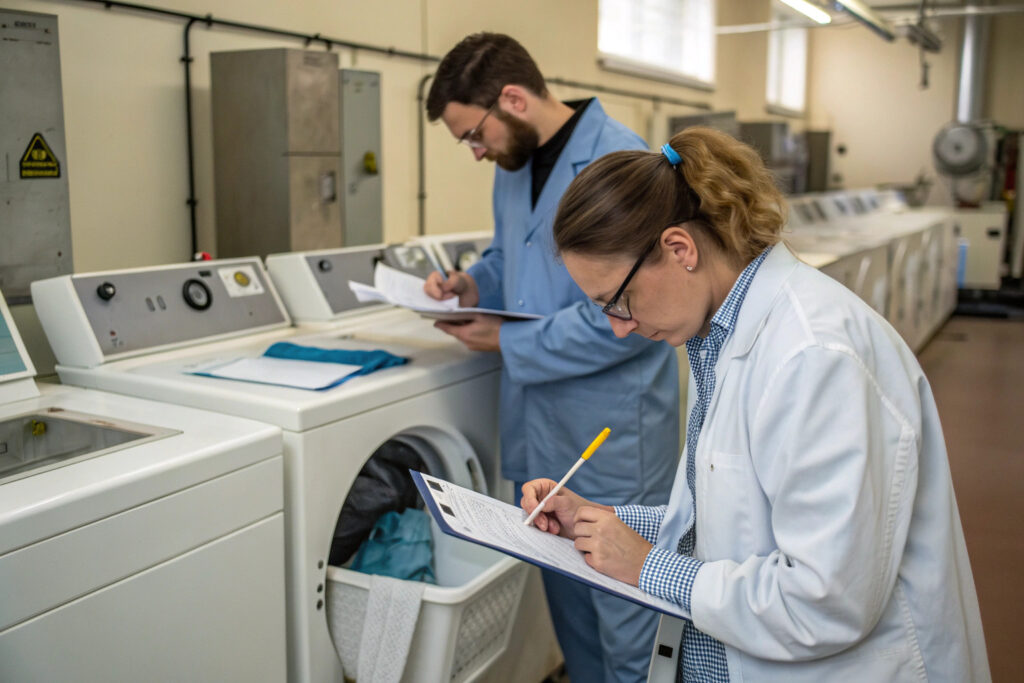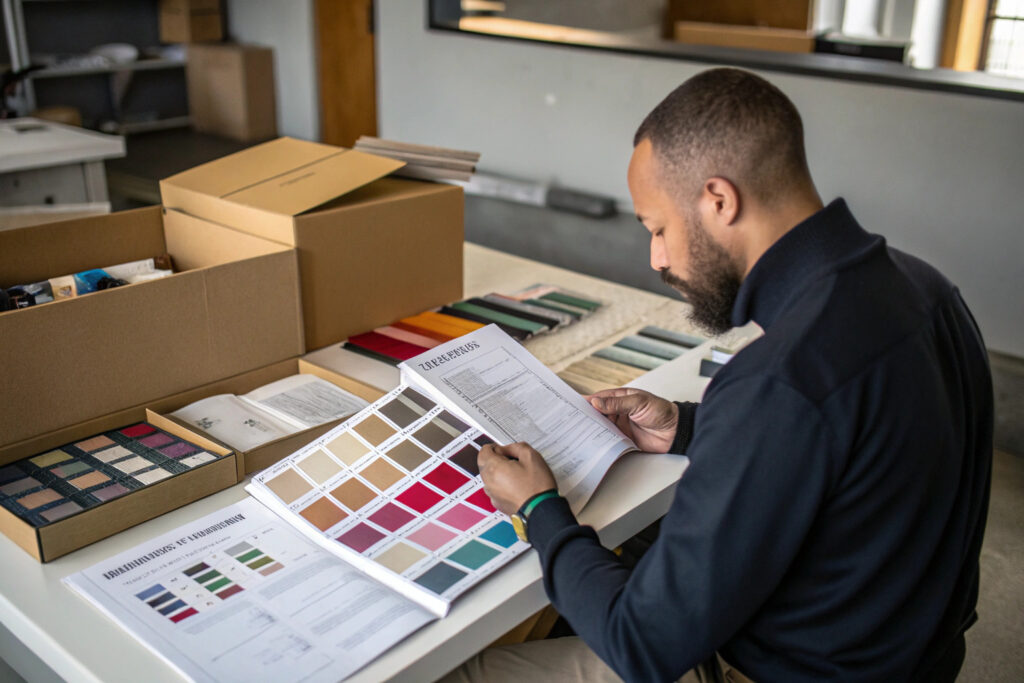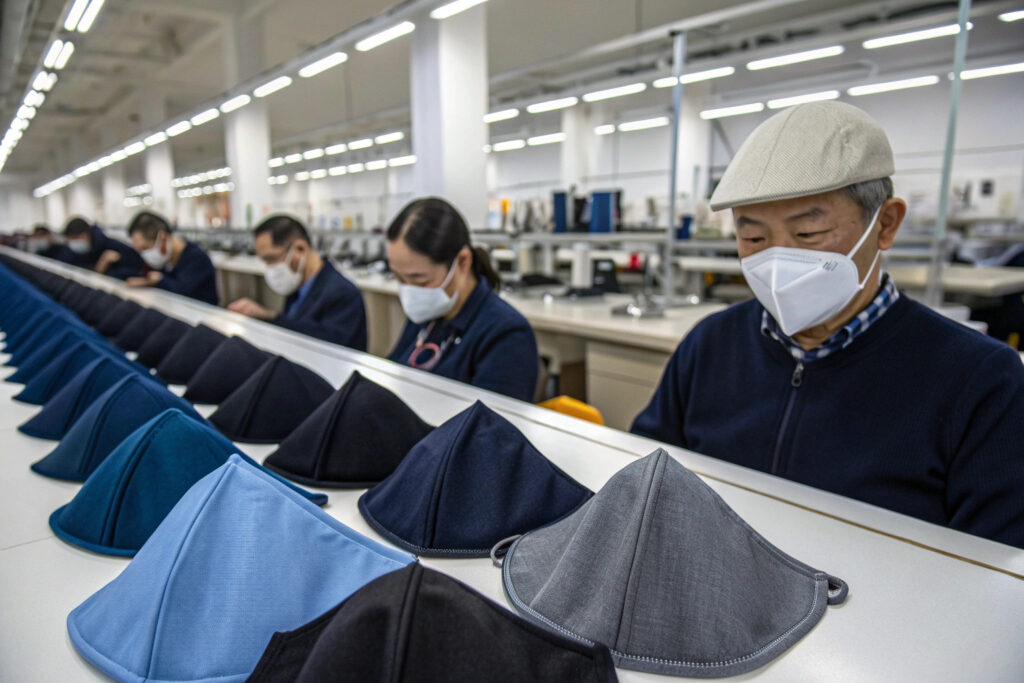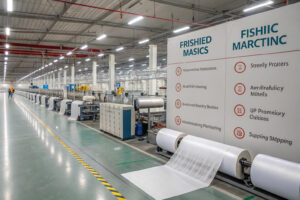When you place a bulk order for fabric masks, you want the colors to be the same across every piece. Many buyers feel upset when they open the shipment and see that the colors do not match what they approved. This mismatch leads to returns, delays, and a loss of trust. For brands that care about image, color control is not a small issue.
The best way to keep color consistent is to control every step of the process. This means checking fabric, lab dips, samples, and bulk production with strict testing. Using clear color systems, reliable testing, and trusted suppliers helps you avoid mistakes and protect your reputation.
That is why we focus on showing how color control works in practice. Each step has its own risks. Buyers need to know what to ask for and what to approve before production starts.
Why Is Color Consistency Critical in Bulk Orders?
Color is the first thing people notice in any product. Even a small shade difference looks obvious when masks are displayed together. In big orders, one lot of “black” masks might look gray, while another looks deep black. Customers see this right away, and stores cannot sell them easily.
Color consistency makes sure every mask looks the same, giving the product a strong and professional image.

How do lab dips help avoid mismatched colors?
Lab dips are small fabric samples dyed to match a chosen shade. Buyers check them before production. Many factories use the Pantone Matching System (PMS) to make sure everyone talks about the same color. Some also use spectrophotometer testing to check numbers, not just the human eye.
Can fabric types affect color appearance?
Yes, different fabrics take dye in different ways. A cotton mask and a polyester mask with the same code may look different. This happens because of the fabric structure. That is why buyers must approve samples in the exact fabric used for production, not just in any material.
What Role Do Testing Standards Play in Color Matching?
Testing is not only about the first look. It makes sure that the color stays the same after washing, wearing, or exposure to light. Without tests, colors may fade, bleed, or lose their shade. Customers notice quickly when colors change.
Global testing standards give clear proof that color is stable and safe for use.

Why is colorfastness testing important?
Colorfastness means how well a fabric keeps its color. Tests check if the mask keeps its shade after washing, rubbing, sweating, or sunlight. Groups like AATCC and ISO make global rules for testing. If a mask passes, it means it will not fade or bleed too fast.
How does shrinkage and finishing affect shade accuracy?
Fabric can change during finishing. Washing, softening, or heat may alter how color looks. Good suppliers test for shrinkage and fabric change before cutting. They also share shrinkage reports. This makes sure the final mask has the right color and size.
How Do Suppliers Maintain Control During Bulk Production?
Even with approved lab dips, things can still go wrong in bulk production. Colors shift if no one checks the line. Reliable factories must monitor every step to keep the result the same.
Trusted suppliers use digital tracking and step-by-step inspections to match colors with approved samples.

What systems track production consistency?
Factories now use QR code tracking to follow every batch. Each dye lot, fabric roll, and report gets stored digitally. If a problem comes up, it is easy to trace back and fix. Buyers can also see how a factory controls its work.
How can inline inspections prevent costly errors?
Inline inspections happen while production is running. Inspectors compare pieces with approved swatches under controlled lighting. If they see differences, they correct right away. This prevents problems from building up until the end.
How Can Buyers Protect Themselves Before Ordering?
Buyers also need to take action. Good approvals and supplier checks reduce risks before mass production. Clear communication prevents color mistakes.
Buyers should request lab dips, ask for pre-production samples, and choose suppliers with proven systems.

Should buyers rely only on photos for approvals?
No, photos often mislead. Light, screen quality, and filters change how colors look. Buyers should always request physical swatches by courier. Many professional buyers keep a Pantone Color Guide to check accuracy themselves.
What supplier practices should buyers check first?
Buyers should ask about standards and reports. Do they follow ISO or AATCC tests? Do they run tests in their own lab? Can they share reports? A professional supplier will say yes and provide details. If a factory already works with global brands, it usually understands how important color control is.
Conclusion
Ensuring consistent color matching in bulk fabric mask orders requires clear steps from both the buyer and the supplier. Buyers must ask for lab dips and real swatches. Factories must follow strict testing and tracking. When both sides work together, the result is a product with stable, professional quality.
If you are looking for a trusted partner to manage your bulk fabric mask production with strict color control, Shanghai Fumao can help. You can contact our Business Director Elaine at elaine@fumaoclothing.com to start your customized order today.


























